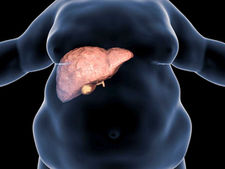
Rhinoplasty / Septorhinoplasty / Nose Aesthetics
For healthy breathing, we need a healthy nose. The nose is an organ that directly reflects a person's expression, posture and character, and is very effective in terms of aesthetic understanding. A healthy nose is of great importance for both breathing and maintaining a healthy life. However, in some people, the curvatures in the nose, called deviations, not only prevent healthy breathing but also cause various diseases such as pharyngitis attacks and throat infection.
Septoplasty operation is performed to correct the deviation problem. Septoplasty is a surgery that is performed to solve the deviation problem inside the nose and does not require intervention outside the nose. However, if the tip of the nose is low, the nose is larger than the face, the bones are wide or there is a hump in the nose, it is possible to intervene in such aesthetic issues upon the person's request. At this point, while Septoplasty is the name given to the intervention into the nose, the process of aesthetic correction of the nose is called Rhinoplasty. The concept we call septorhinoplasty is formed at this point and appears as the nose surgery preferred by many people. This operation, which is widely used today, is the choice of people who want to have both an aesthetic appearance and a healthy nose by intervening both inside and outside the nose. As for tampons, which many people hesitate about after surgery, new generation silicone tampons brought by today's technology are now used. In this way, it is ensured that the person can breathe with the tampons used. After 5 days, silicone tampons in the nose are removed. A thermo plastic plaster is placed on the nose for the next 5 days, and after a week, the person can socialize easily. After the surgery, people are usually discharged after a 1-day hospital stay. In the following period, regular check-ups continue in the 1st, 3rd, 6th and 12th months and the patient is monitored closely. Who can undergo Rhinoplasty? Anyone who wants to have a nose job is a candidate for rhinoplasty. In addition, if the patient has no aesthetic concerns but the deformity in the nose prevents healthy breathing, rhinoplasty can be performed for functional gain. If a patient who is planned for nose surgery due to bone curvature, which we call septum deviation, which prevents breathing through the nose, has aesthetic concerns, it would be appropriate to have the operation performed in the same session. In this way, the patient will have less trouble and the bone and cartilage removed from the nose during the operation can be used as filling and support material in rhinoplasty. Although the most common patient group is between the ages of 18-40, we can say that there is no upper limit anymore. Rhinoplasty can also be performed in the 50s and 60s if the patient's general condition is suitable. How to prepare before surgery? First of all, the patient must be examined. What the patient expects from the surgery and the doctor's possible shape change must be discussed before the surgery. Preoperatively, photographs of the patient's nose should be taken. This is important for both preoperative planning and comparison of before and after images. The medications the patient is using and whether he or she has an existing systemic disease should be questioned. Afterwards, examinations should be performed and the patient should be evaluated by the anesthesiologist. Should the surgery be performed under local anesthesia or general anesthesia? It can be performed either with local anesthesia or with general anesthesia. General anesthesia is mostly preferred.
How long does the surgery take?
It is an operation that takes approximately 1.5 - 2 hours. It may also take longer depending on the existing deformity in the nose.
What kind of process awaits the patient after the surgery?
When the patient wakes up after the surgery, there are silicone tampons inside the nose and a mold (splint) outside the nose. There is temporary swelling and bruises on the patient's face around the eyes. Intranasal tampons are removed on the 2nd day after surgery. Swelling decreases within the first week. Ice should be applied to the face on the first day to reduce swelling and bruising. In the first week of the surgery, the patient's stitches and the splint outside the nose are removed.
What should the patient pay attention to in this process?
It is necessary to use glasses and avoid sunbathing, especially for the first 6 months. It is important to protect the nose from impacts and monitor it with regular checks for the first year.
FOR INFORMATION AND APPOINTMENT, YOU CAN LEAVE YOUR NUMBER OR ASK OUR EXPERTS
YOU CAN LEAVE YOUR NUMBER FOR INFORMATION AND APPOINTMENT AND ASK QUESTIONS TO OUR EXPERTS



-04.png)
-06.png)
-05.png)
-08.png)
-07.png)























